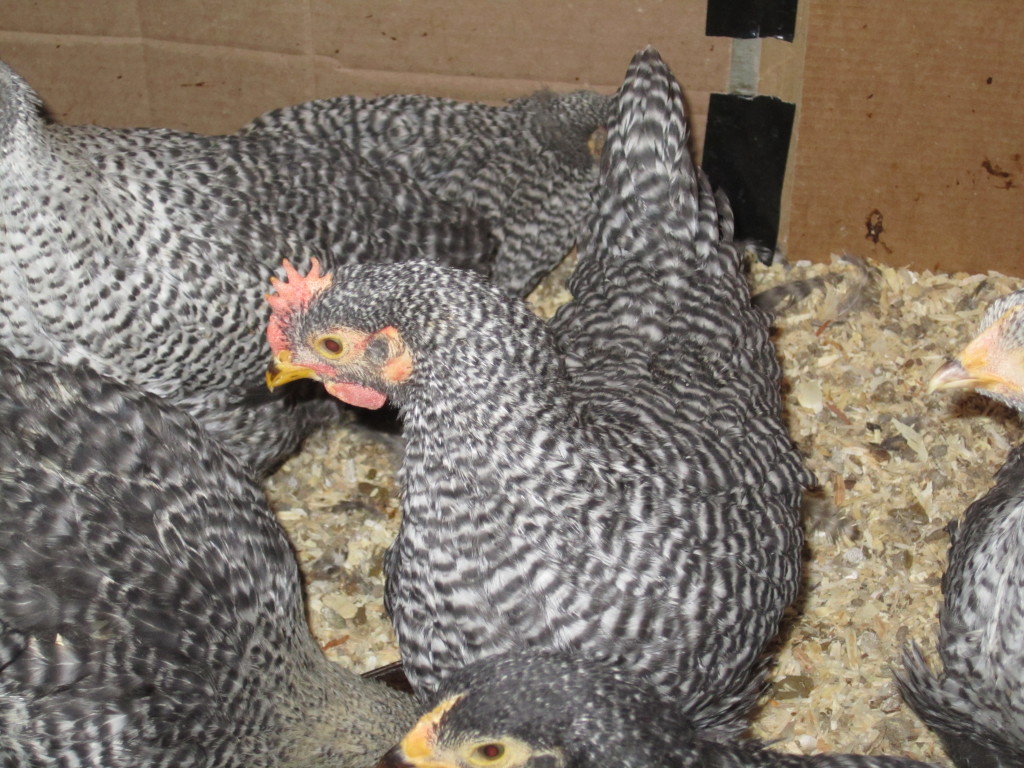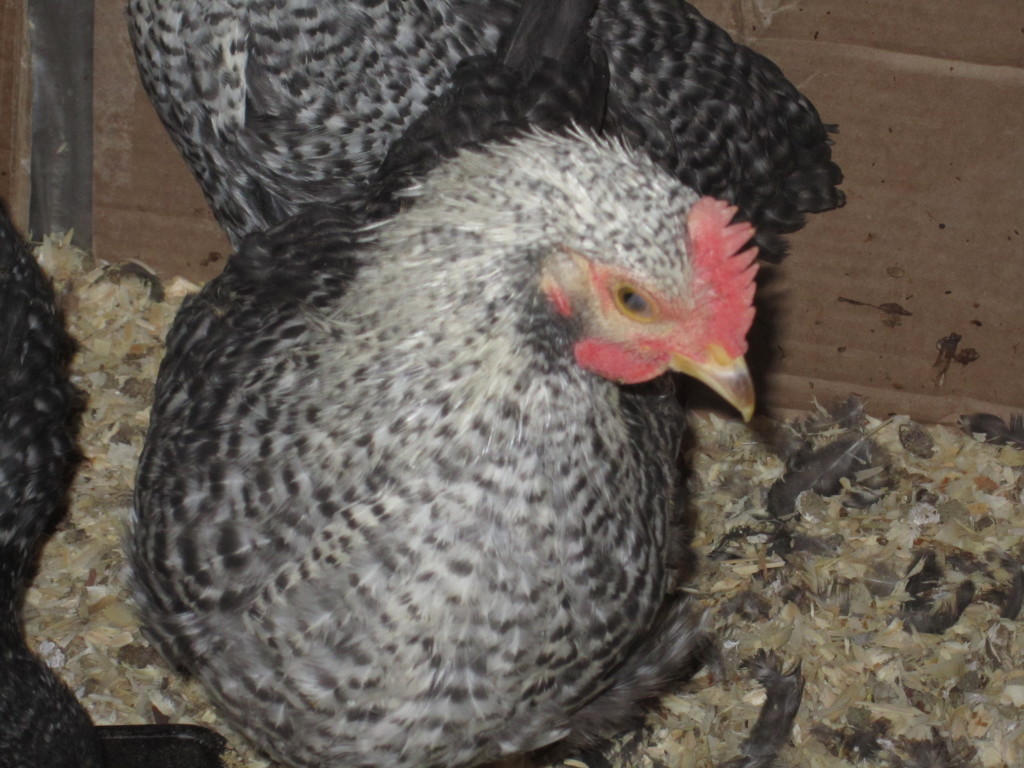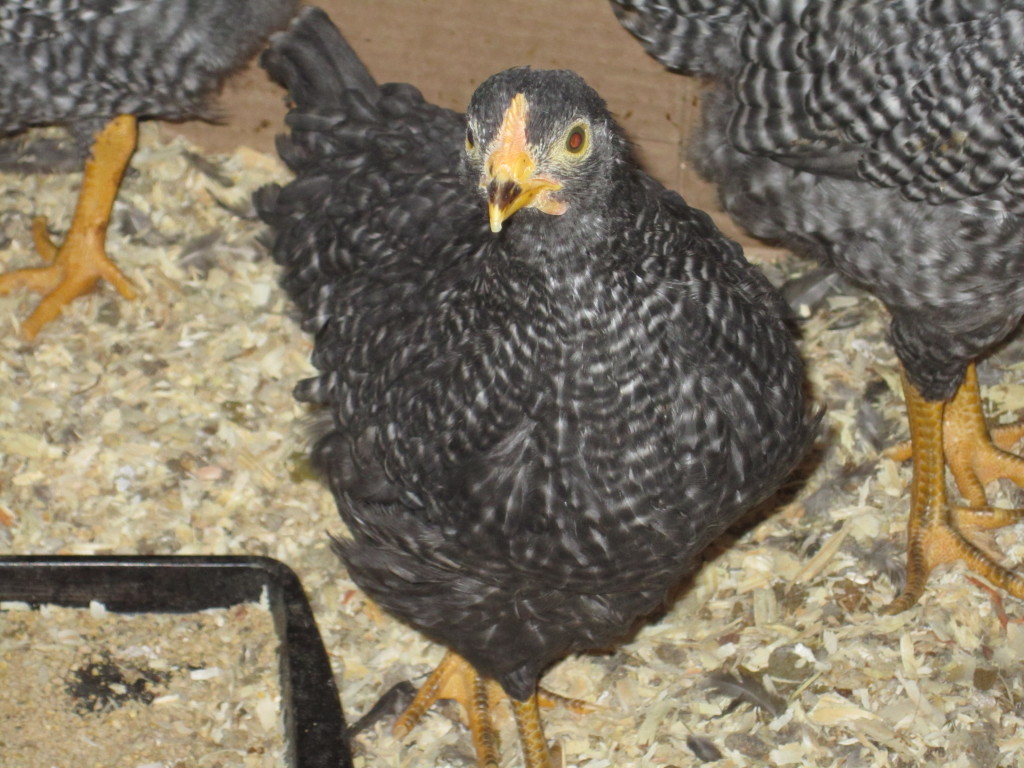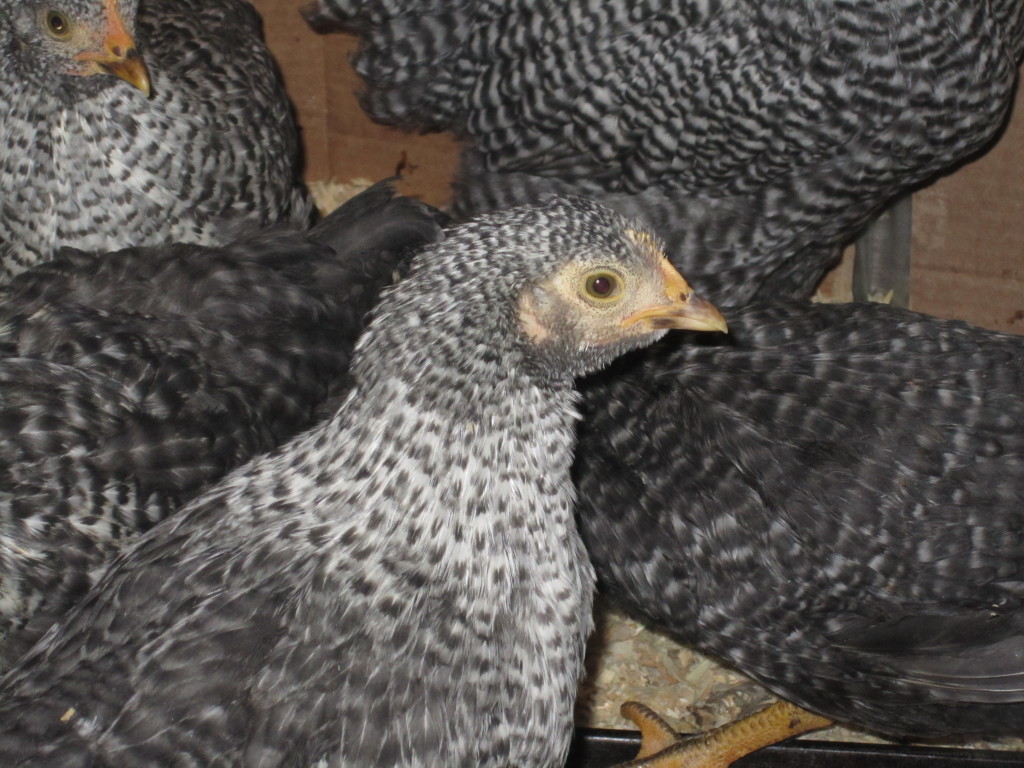4 weeks ago, when the chicks were 4 weeks old, Jason and I decided to take a tally on how many we thought would be hens and how many would be roosters. At that point, they were starting to grow little combs, but it was harder to tell than it is now at 8 weeks. So far, as well as we can tell, we were right about our guesses!
Before we thought about their sex, we divided them up based on their assumed full-blood or hybrid status. Then we guessed about the males and females within each type.
When we were guessing, we looked at:
- Comb size and color
- Males have larger and pinker combs
- Females have smaller and yellower combs
- Leg color
- From what we read about the Barred Rocks, males and females have differnt leg colors. Even though some of the chickens are hybrids and not full-blooded Barred Rocks, we though we could at least use this trait to help us think about the Barred Rocks in the bunch.
- Males have oranger legs
- Females have grayer legs
- Feather color
- Among the Barred Rocks, males have more white in their feathers, since having “barred,” or “speckled” feathers is a sex-linked trait of which males carry 2 genes while females have only 1.
- Males are lighter
- Females are darker
- Body size
- Males will grow to be bigger than females, but at 4 weeks guessing based on body size is a lot harder. We still tried, though!
Deciding on the sex of the hybrids was a lot harder than the Barred Rocks, for obvious reasons and for those listed above.
These are the numbers that we came up with:
- 13 full-blood Barred Rocks
- 7 males (we included Gimpsy in this count–even though he was small-bodied and didn’t have much of a comb–because he had lighter feathers)
- 6 females
- 8 Barred Rock and Buff Orpington Hybrids
- 3 males
- 5 females
And what do you know? Gimpsy is a boy and we are mostly sure that our guesses were correct. We can’t wait to tell for sure!
This puts our total at 11 hens and 10 roosters. That sure is about a 50/50 split! This means that in a month or so, we’ll have 11 more hens that we’ll raise to be layer hens, 1 Barred Rock rooster for breeding purposes, 1 hybrid rooster for breeding purposes (we’re for sure keeping my favorite, friendly rooster), and Gimpsy–who we’ll probably have to take care of in special ways.
And that means we’ll have 7 chickens in the freezer for eating! Thank you, Mother Nature.
And then, we’ll start the cycle all over again with another batch of eggs…!
.:.



